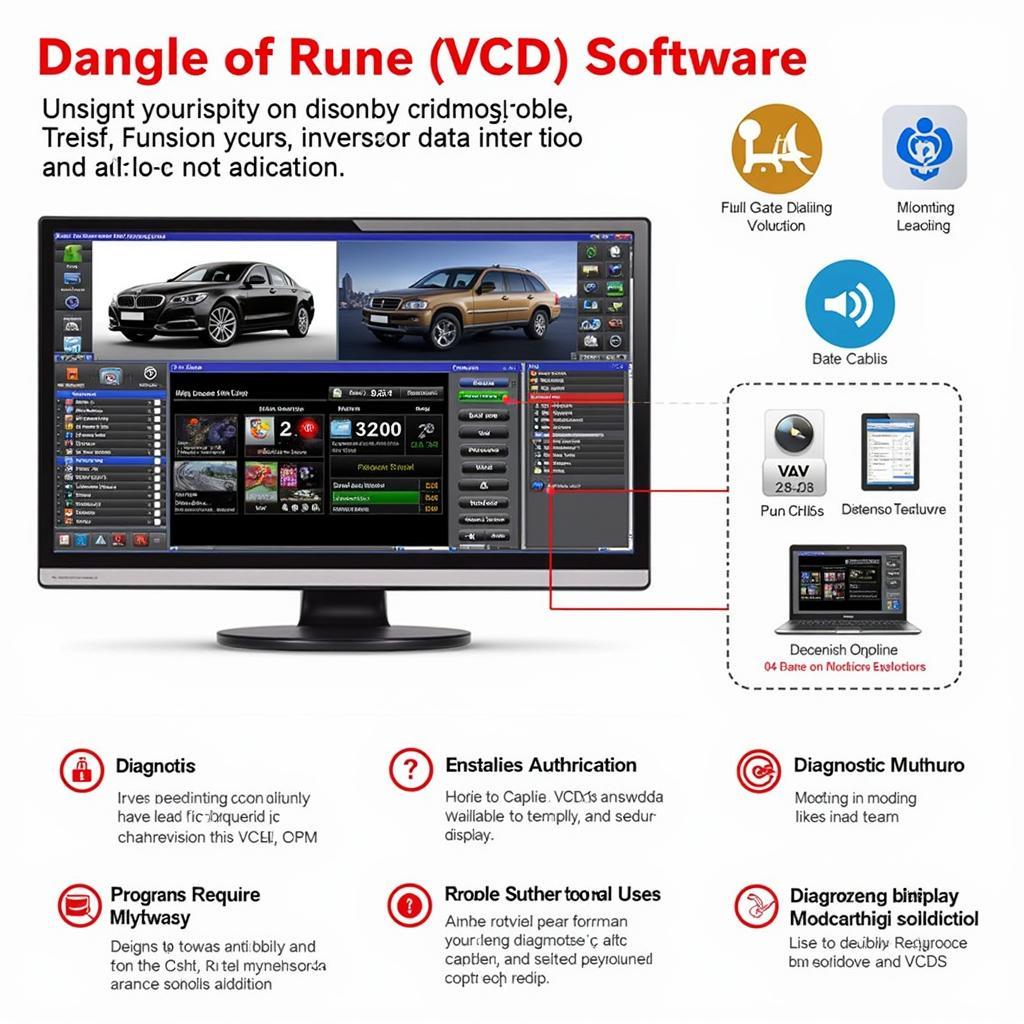Turbocharged engines are becoming increasingly popular in modern vehicles. They offer increased power and fuel efficiency compared to naturally aspirated engines. However, turbocharged engines are more complex and require specialized tools for diagnosis and repair. This is where VCDS (Vag-Com Diagnostic System) comes in, a powerful software that allows you to monitor and diagnose various aspects of your vehicle, including turbocharger performance. One of the critical parameters you can monitor using VCDS is turbo boost pressure. This comprehensive guide will delve deep into VCDS turbo pressure, its significance, and how to interpret the readings for optimal engine performance.
What is VCDS Turbo Pressure?
VCDS turbo pressure refers to the reading obtained through the VCDS software, representing the pressure generated by the turbocharger. This pressure reading provides valuable insights into the turbocharger’s health, boost pressure control system functionality, and overall engine performance.
“Think of turbo pressure as the extra ‘oomph’ your engine gets from the turbocharger,” says John Miller, an automotive engineer specializing in forced induction systems. “By monitoring this pressure with VCDS, you can ensure your turbo is working efficiently and identify potential problems before they become major headaches.”
Why is Monitoring Turbo Pressure Important?
Monitoring your turbo pressure is crucial for several reasons:
-
Early Problem Detection: Fluctuations or deviations from the expected turbo pressure can indicate issues with the turbocharger itself, such as a failing wastegate, boost leaks, or a damaged impeller. Early detection allows for timely intervention, potentially saving you from costly repairs down the line.
-
Performance Optimization: Understanding your turbo pressure helps identify potential areas for performance improvement. For example, if the pressure is consistently below the expected range, it might indicate a boost leak or a problem with the boost control system.
-
Prevent Engine Damage: Excessive turbo pressure can lead to severe engine damage. Monitoring this parameter allows you to identify and rectify any issues causing overboosting before it leads to catastrophic failure.
How to Monitor Turbo Pressure with VCDS
Monitoring turbo pressure with VCDS is a relatively straightforward process:
- Connect your VCDS interface to your vehicle’s OBD-II port.
- Turn on the ignition but do not start the engine.
- Launch the VCDS software and select the “Select Control Module” option.
- Choose the “Engine” module (usually labeled 01-Engine).
- Go to “Measuring Blocks” or “Advanced Measuring Values.”
- Locate the measuring block for “Boost Pressure (Specified)” and “Boost Pressure (Actual).“
- Start the engine and observe the readings while driving.
 Turbo Pressure Gauge
Turbo Pressure Gauge
Interpreting VCDS Turbo Pressure Readings
When analyzing VCDS turbo pressure readings, it’s essential to consider both the specified (desired) boost pressure and the actual boost pressure.
-
Specified Boost Pressure: This value, determined by the engine control unit (ECU), indicates the desired boost pressure for specific operating conditions.
-
Actual Boost Pressure: This reading reflects the pressure the turbocharger is currently producing.
Ideally, the actual boost pressure should closely match the specified boost pressure. Deviations between these two readings can point towards underlying issues. For instance, if the actual boost pressure is significantly lower than the specified pressure, it could indicate a boost leak, a faulty wastegate, or a problem with the boost control solenoid. Conversely, if the actual pressure consistently exceeds the specified pressure, it may point towards a malfunctioning boost control system, potentially leading to engine damage.
Common VCDS Turbo Pressure Issues and Troubleshooting
Here are some common VCDS turbo pressure-related issues and potential troubleshooting steps:
-
Low Boost Pressure: This could be due to boost leaks, a faulty wastegate, a restricted air intake, or a problem with the N75 valve (boost control solenoid). Inspecting for leaks, checking the wastegate actuator arm for proper movement, and examining the N75 valve are good starting points.
-
High Boost Pressure (Overboosting): This issue can stem from a malfunctioning N75 valve, a faulty boost pressure sensor, or problems with the ECU’s boost control programming. Checking the N75 valve for proper operation, inspecting the boost pressure sensor, and potentially reflashing the ECU might be necessary.
-
Fluctuating Boost Pressure: This symptom could indicate a problem with the wastegate actuator, the boost pressure sensor, or the N75 valve. Examining the wastegate actuator for smooth operation, verifying the boost pressure sensor’s accuracy, and testing the N75 valve are recommended.
 Mechanic Inspecting Engine
Mechanic Inspecting Engine
Tips for Maintaining Optimal Turbocharger Health
-
Regular Oil Changes: Turbochargers rely on engine oil for lubrication and cooling. Regular oil changes with the manufacturer-recommended oil are essential for maintaining optimal turbocharger health.
-
Allow the Engine to Cool Down: After driving, especially under heavy loads, allow the engine to idle for a short period to enable the turbocharger to cool down gradually. This practice helps prevent oil coking and premature wear.
-
Address Issues Promptly: If you encounter any unusual noises, performance issues, or fault codes related to your turbocharger, address them promptly by seeking professional diagnosis and repair.
Conclusion
Understanding and monitoring your VCDS turbo pressure is crucial for ensuring the optimal performance, longevity, and health of your turbocharged engine. By familiarizing yourself with typical pressure readings, potential issues, and troubleshooting steps, you can address concerns proactively, potentially preventing costly repairs and ensuring a smooth and powerful driving experience.
Need more guidance on using VCDS for turbocharger diagnostics? CARDIAGTECH offers a wealth of resources, including in-depth articles and helpful guides on various automotive diagnostic topics. Check out our website or contact us today for expert advice and support on all things car diagnostics.

